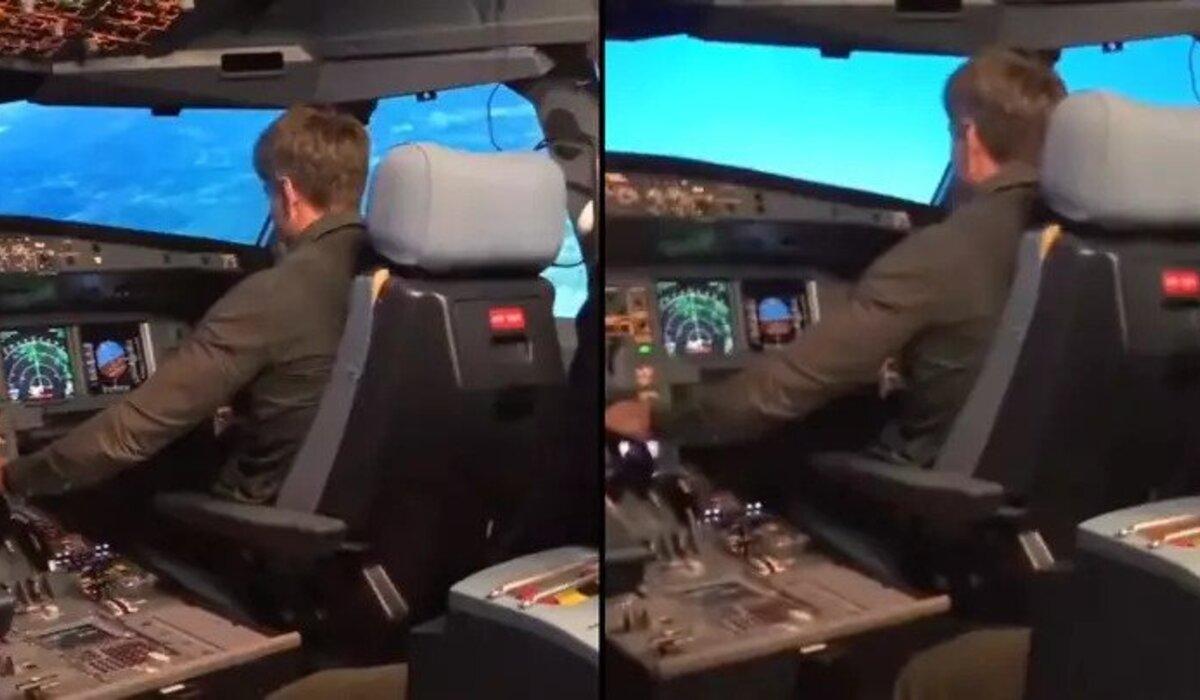The recent circulation of a video depicting a stall incident in the cockpit has ignited anxiety and sparked conversations about air travel safety on social media. The footage reveals a pilot’s calm demeanor as he addresses a nose-down situation, accompanied by the disconcerting blare of an alarm repeatedly uttering “stall, stall.”
The intricacies of the aircraft’s technical system are underscored by the thunderous sounds of engines desperately working to regain control. Despite the alarming nature of the incident, the experienced flight crew maintains composure and successfully averts a crisis, ultimately providing reassurance to the passengers aboard.
But social media users have claimed they have been scarred for life by the ‘scary’ footage, who said that watching the stall in real-time has well and truly put them off air travel for the foreseeable future.
One said: “New fear unlocked. Thanks,” while another wrote: “I know for a fact I would start ugly crying if that happened.”
A third added: “I’m going on a plane on Friday, don’t do this to me! I’m already scared.”
And a fourth asked: “Does this hurt the plane?”
While a fifth joked: “That’s not a stall, that’s a Ryanair landing.”
Stalling an aircraft is a markedly different experience from stalling a car. It involves a reduction of lift due to an increased angle of attack surpassing the critical angle, typically around 15 degrees. This excessive angle disrupts airflow, leading to a decrease in lift. If not promptly addressed by skilled pilots, a stall can result in an uncontrolled descent, posing heightened risks during critical phases of flight, such as takeoff and landing.
Experts elaborate on the stall dynamics, explaining that during such incidents, flight controls may become sluggish, necessitating immediate corrective action. Pilots are trained to push the aircraft’s nose down, reducing the angle of attack and restoring proper airflow to the wings.
“In normal flight, the airflow over the shaped wings creates lift.
“The airfoil shape changes the airflow direction, and the downward deflection of the air causes an upward force (lift) to be exerted on the airfoil.
“Increasing the angle of attack causes flow separation, where the air no longer flows cleanly over the upper surface of the wing.”
“If this angle reaches the critical angle, the airflow is disrupted to the point where the lift generated begins to decrease. It is the angle of attack of the wing exceeding its critical angle that causes a stall.”
If the stall isn’t corrected by quick off the mark pilots, the plane will begin to fall.
Those trusted to fly the aircraft might first notice their flight controls have become sluggish, because they are less responsive due to the changes in airflow.
Simple Flying continued: “An early stall is easily corrected by pushing the aircraft nose down to reduce the angle of attack. “This is, of course, much more serious at low altitudes when taking off or landing. If not corrected, the wing loses lift, and the aircraft will start to fall.
“Any fixed-wing aircraft can stall. And all aircraft have warning systems to prevent, or alert pilots, to dangers.”
The online video, while unnerving for viewers, underscores the significance of rigorous pilot training and the presence of advanced warning systems on modern aircraft. These systems play a crucial role in preventing or alerting pilots to potential dangers, contributing to overall aviation safety.
The emotional impact of the video is palpable in social media reactions, with users expressing newfound fears and concerns about air travel. However, it is imperative to emphasize that while stalls are serious events, they are manageable with prompt and appropriate pilot intervention.
The incident serves as a poignant reminder of the responsibility and skill required in aviation, highlighting that trained professionals are well-equipped to handle unforeseen challenges and prioritize passenger safety during every flight.

